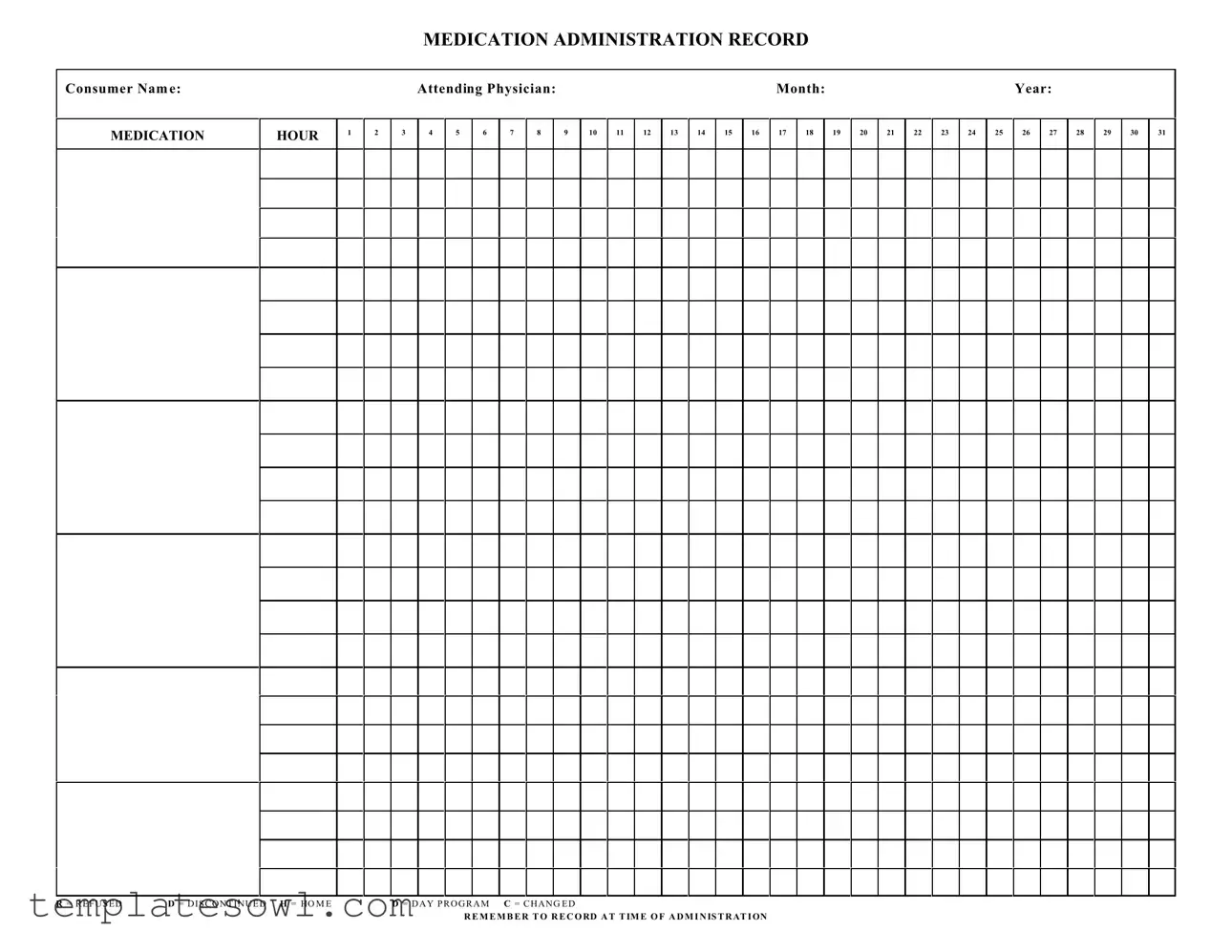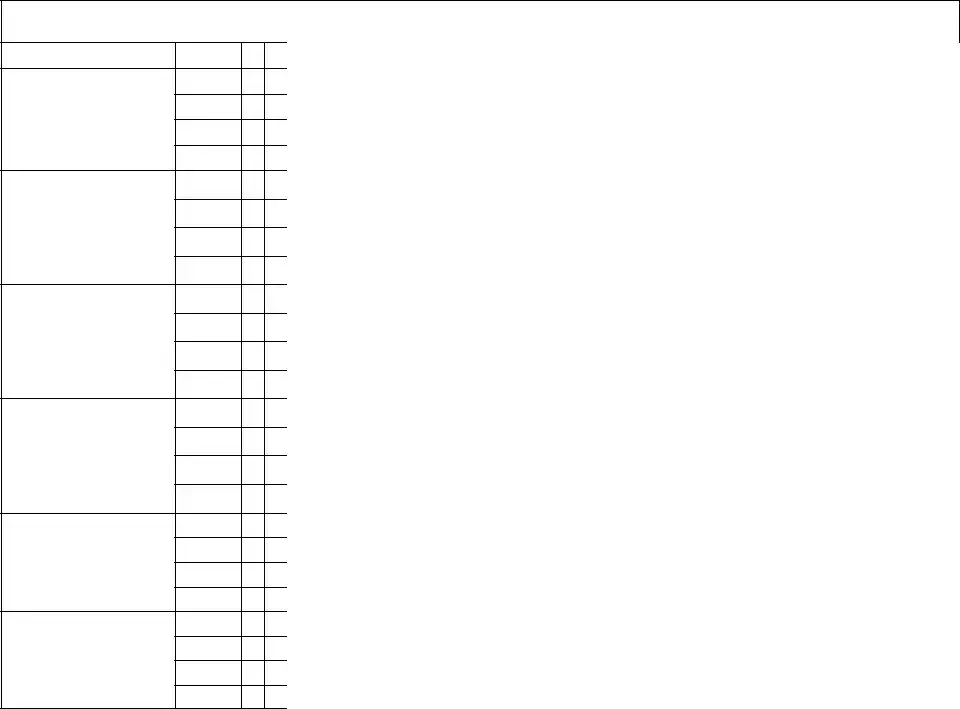What is the purpose of the Medication Administration Record Sheet?
The Medication Administration Record Sheet (MARS) serves as a crucial tool for tracking the administration of medications to consumers. It is designed to ensure that all medication doses are administered correctly and documented in a timely manner. This form helps healthcare providers maintain an accurate record of what medications have been given, when they were given, and whether any doses were refused or discontinued. By using this sheet, it supports safe medication practices and enhances patient care.
How should I fill out the Medication Administration Record Sheet?
Filling out the MARS requires careful attention to detail. Start by entering the consumer's name and the attending physician's name at the top of the form. Next, you’ll need to indicate the month and year. For each hour of medication administration, mark the corresponding boxes for the days of the month. Use specific codes: “R” for refused, “D” for discontinued, “H” for home, “D” for day program, and “C” for changed. It is critical to record this information at the time the medication is administered, ensuring accuracy and minimizing the risk of errors.
What do I do if a medication was refused?
If a consumer refuses a medication, you should mark the corresponding box with an “R” at the appropriate hour on the MARS. It’s also important to document the reason for the refusal in the consumer's medical record, if applicable. This information helps healthcare providers understand the consumer's preferences and monitor their overall adherence to the medication plan. Consistent patterns of refusal may indicate a need for further assessment or a change in the medication regimen.
Can I use the Medication Administration Record Sheet for multiple consumers?
No, the MARS is designed to be used for one consumer at a time. Each sheet contains specific information pertinent to an individual, including their unique medication regimen. Using one sheet for several consumers would not only create confusion but also compromise the integrity of the medication records. It is essential to maintain separate records for each consumer to ensure clear and accurate documentation.
What should I do if I make a mistake on the Medication Administration Record Sheet?
If an error occurs while filling out the MARS, it is important to correct it appropriately to avoid any misunderstandings. Do not use whiteout or erasers, as these can obscure the original entry. Instead, you should cross out the mistake with a single line and initial it. Then, neatly write the correct information adjacent to the error. This practice ensures transparency in documentation and maintains the integrity of the record.

